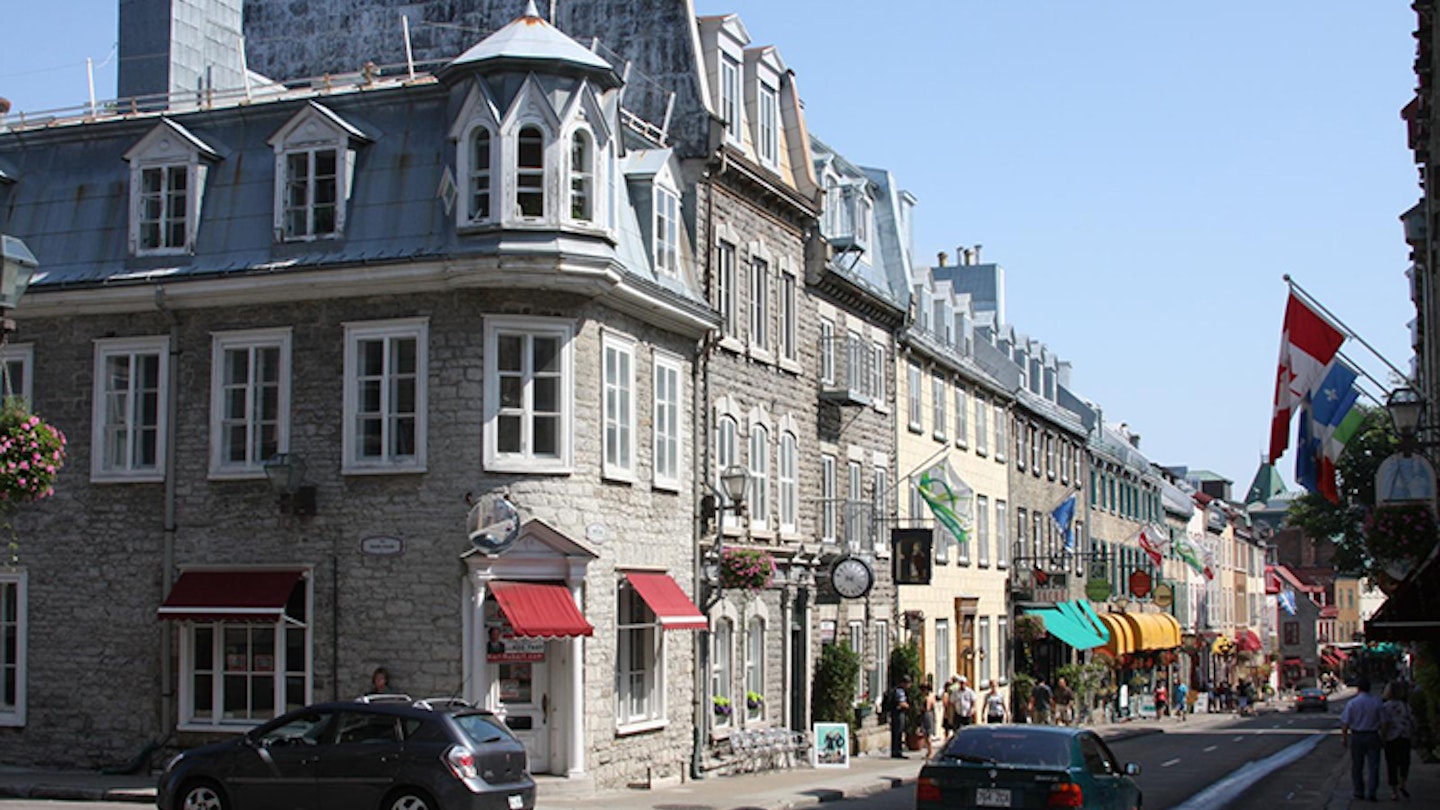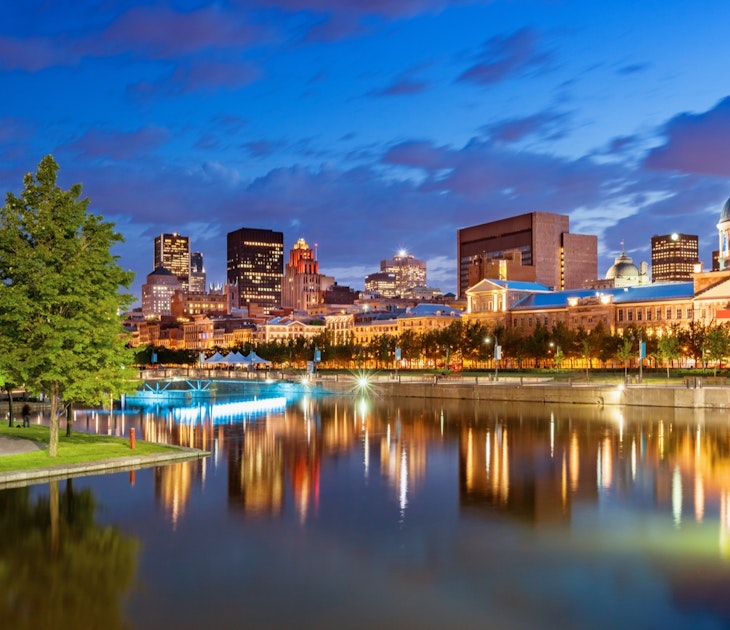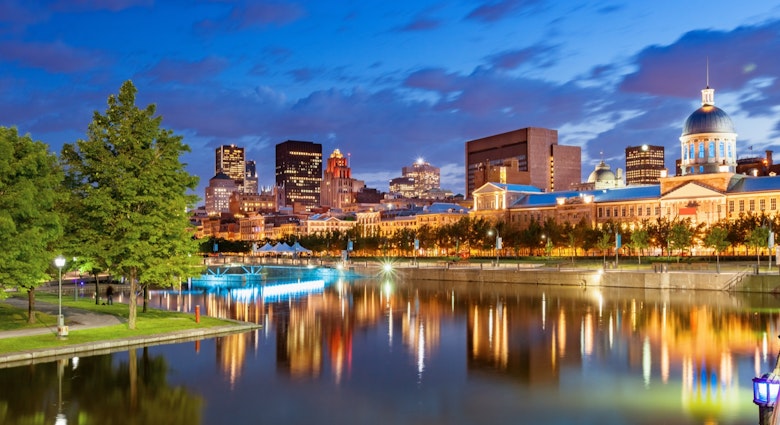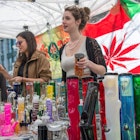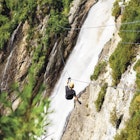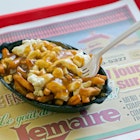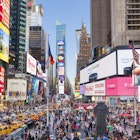As one of the oldest settlements in North America, Québec City’s 400 years of history can be spotted at every turn. With its beautiful assortment of historic buildings and narrow, cobbled streets, there’s a distinctly Old World feel to this French-speaking North American city. But the beauty of Québec City is its balance between the old and the new. Visitors can dine in world-class restaurants under the shadows of 17th century church spires, sip New Age cocktails while overlooking mansard roofs or take a stroll through a park that was once the site of a pivotal battle during the Seven Years’ War.
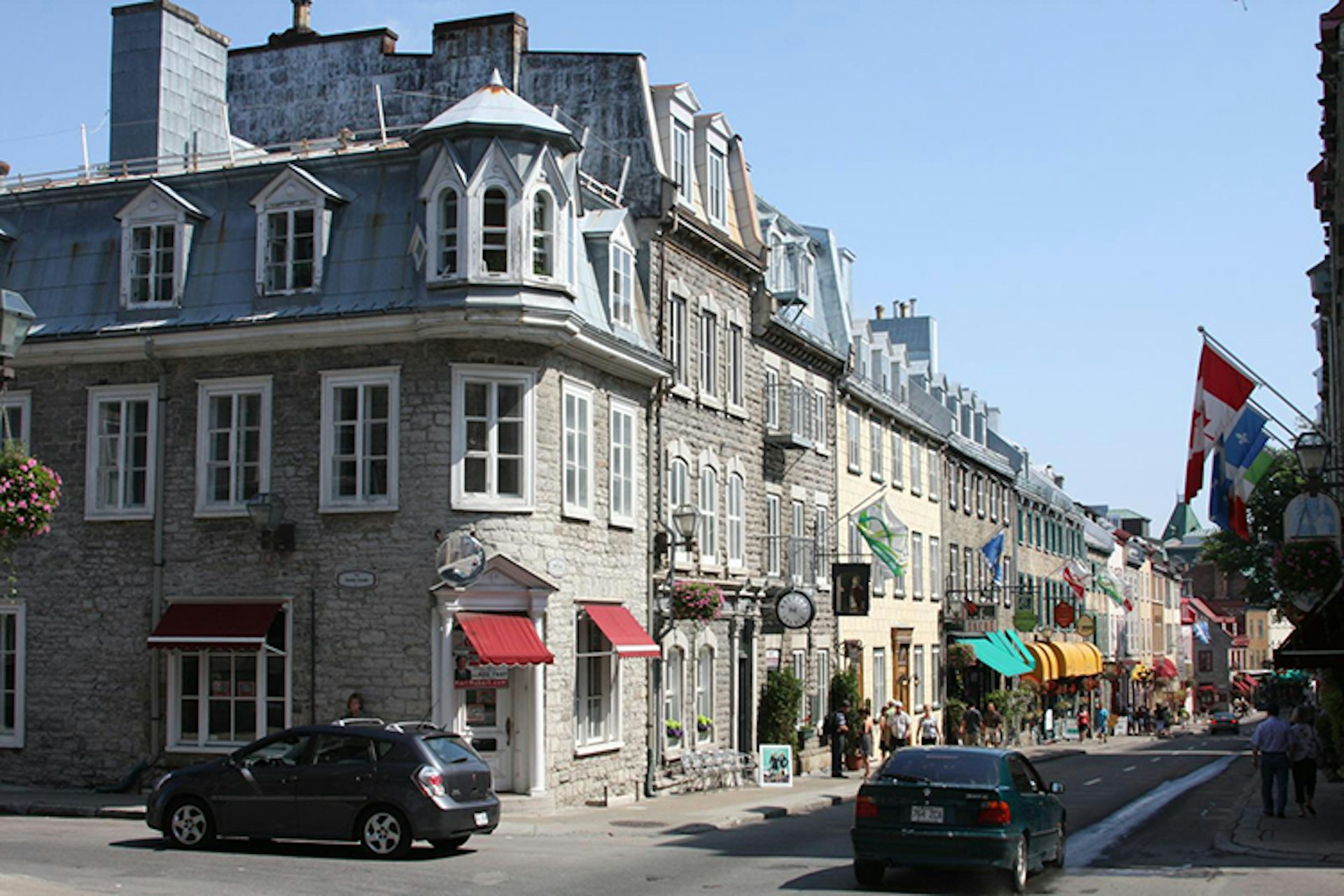
First-timers to Québec City should start off in Old Town, a Unesco World Heritage site that acts as a living museum dedicated to maintaining the charm of this birthplace of the French Empire in North America. From here it's easy to explore the city's other sights and experiences, from sweet Italian gelato to yard-tall beers, or from a vast collection of Québecois art to a museum of chocolate.
Stats
- Population: 516,622
- Visitors per year: 4.9 million
- Language: Nearly 95 percent of the population speaks French, and the majority of hospitality workers also speak English.
- Daily budget: $150–250 for mid-range accommodation and meals
- Distance to Montréal: 250.9 km
- Driving time to/from Montréal: about 2.5 hours
- Best time of year to go: June–September and December–February
Neighborhoods & sights
Old Town
Québec City’s Old Town, or Vieux-Québec, is the epicentre of the city’s attractions. Here you’ll find yourself in the company of many other tourists and tour groups as you squeeze your way along its picturesque streets. But it’s worth it, as there’s a wealth of historic attractions in this quarter.

The most prominent landmark is Le Château, whose bulky but appealing tower is said to make it the most photographed hotel in the world. A contrast to the hotel’s genteel charm is the Citadel, built by British forces to defend against both a possible American invasion and an uprising by the local population. The fortifications that encircle the Old Town provide a great 4.6km walk and great views, as does the clifftop Terrasse Dufferin.
Nearby, the Basilique-Cathédrale Notre-Dame-de-Québec is a sublime reminder of Québec City’s spiritual heritage, while the Musee du Fort provides an entertaining and educational audiovisual show describing the key battles in the city’s past.
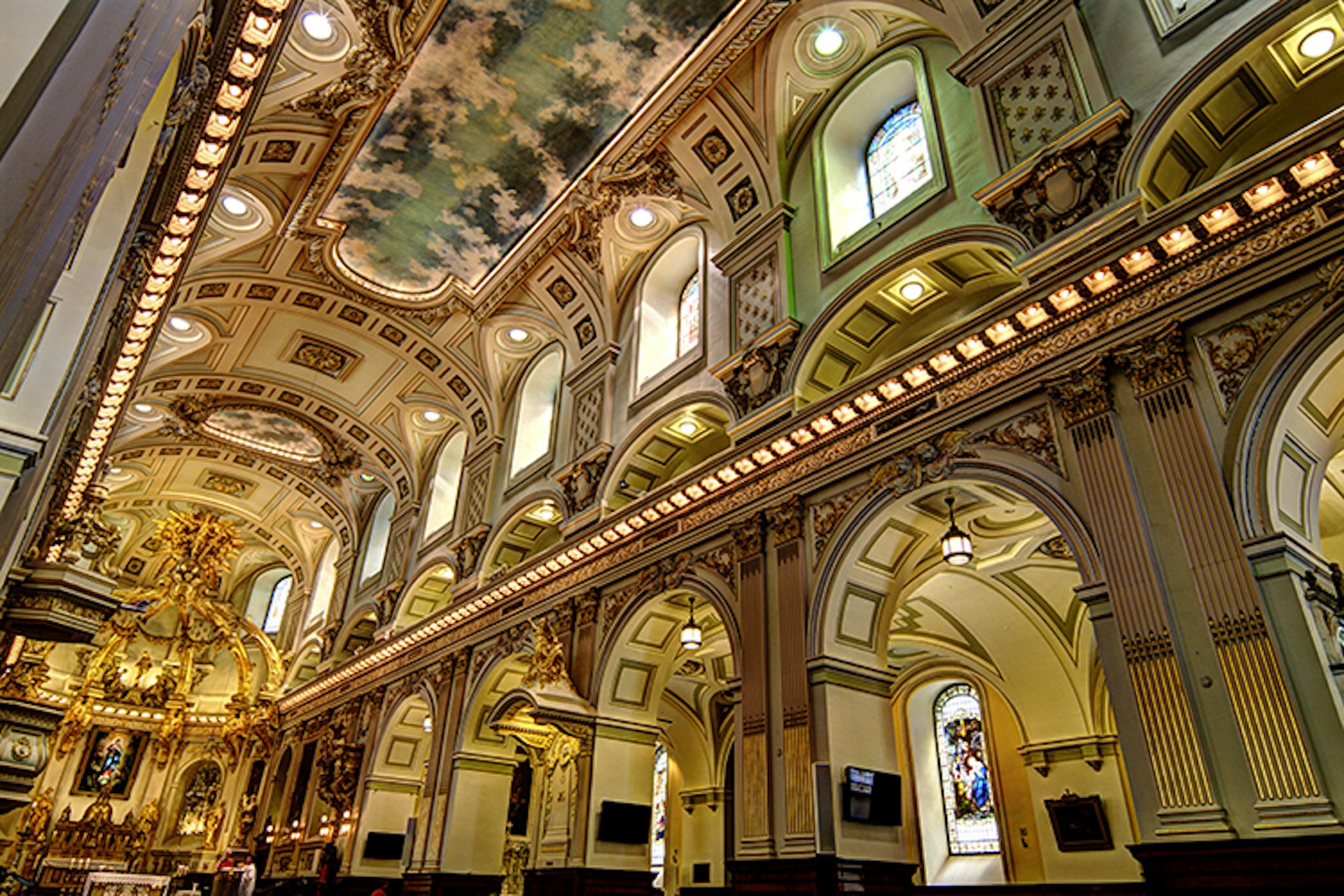
Below the Old Town, reachable by a funicular railway, is the Old Lower Town. The hub of this historic area is Place Royale, surrounded by attractive narrow streets and restored buildings. The Centre d’Interprétation de Place-Royale tells the story of Québec City’s earliest days.

Good places to stay in the Old Town include the Auberge Place D’Armes, as well as the centrally located budget choice Auberge Internationale de Québec. For classic Québecois food try the set menu at Aux Anciens Canadiens or get a poutine fix at Chez Ashton – follow up with a drink and live music at the popular Pub St Alexandre.

Parliament Hill & Montcalm
Southwest of the Old Town, this area holds a number of interesting attractions as well as plentiful green space, a possible antidote to the bustle inside the walls. A key attraction is the Hôtel du Parlement, the legislature for the Province of Québec. Completed in 1886, it’s an impressive Second Empire structure featuring numerous statues of significant historical figures.
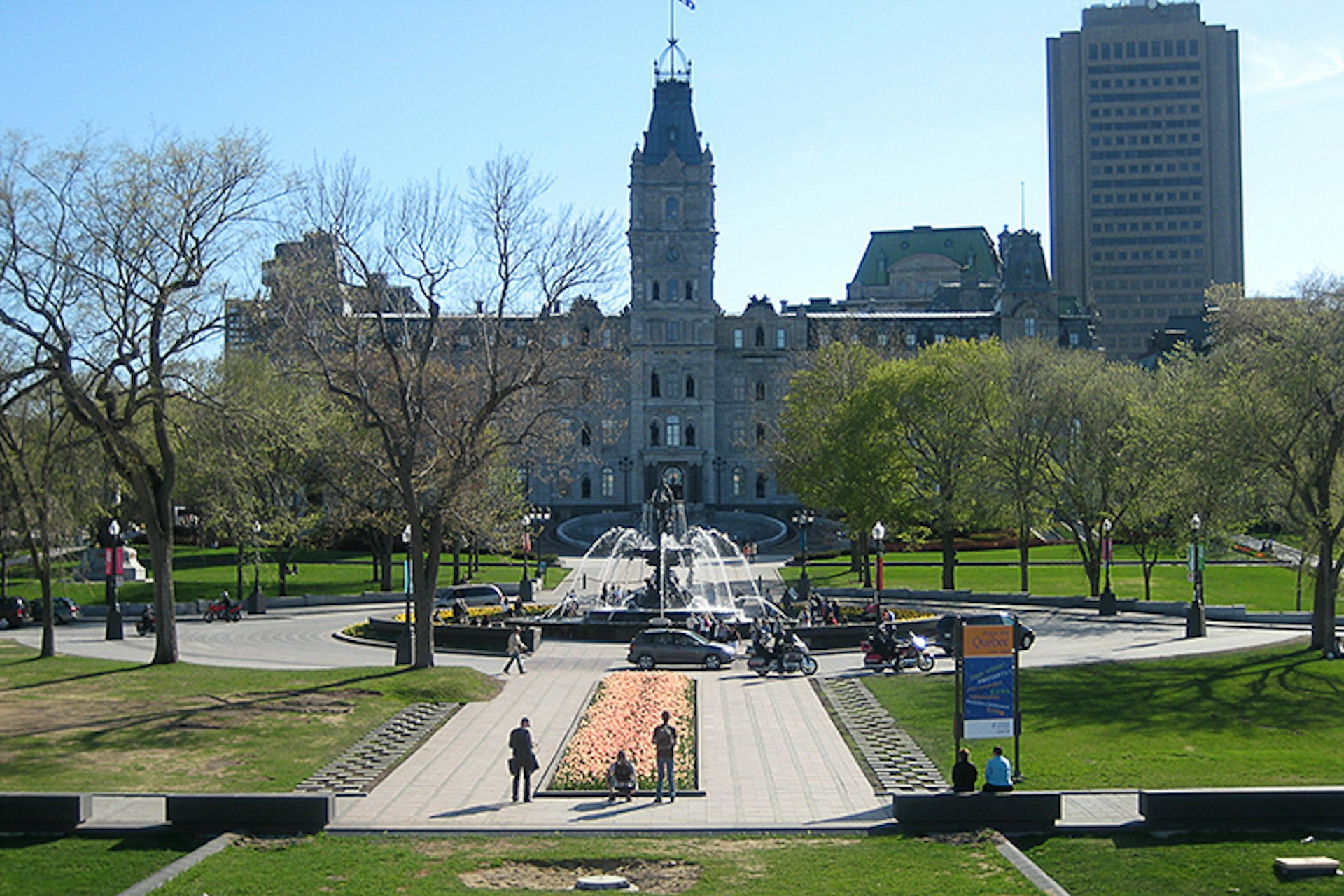
Don’t miss the lavish Fontaine de Tourny in a roundabout in front of the building. Created for the 1855 World Fair in Paris, it was presented to Québec City on its 400th birthday in 2008.
Not far from the Parliament is Battlefields Park, sprawling across the Plains of Abraham. This was the ground on which Britain won control of Québec in 1759, a conflict recounted at the Discovery Pavilion on the park’s edge.
A pleasant walk through the park, past its surviving Martello Towers, will bring you to the excellent Musée National des Beaux-Arts du Québec and its extensive art collection.

A comfortable hotel in this area is the Hotel Relais Charles-Alexandre. To eat and drink, head to the lively stretch of restaurants along Grand Allée. A bistro meal at Aux Vieux Canons should be followed by an entertaining sing-along at basement chanson bar Les Voûtes de Napoléon.
St Jean Baptiste
There are not many historic sights in this busy neighbourhood west of the city walls, but it’s well worth visiting for its interesting shops and tasty food.
The main thoroughfare is Rue St Jean, where you’ll find a chocolate museum attached to the shop of chocolatier Érico. Here you can browse display cases of vintage chocolate boxes, learn about cocoa production and marvel at clothing constructed from chocolate.

A key sight at the western end of Rue St Jean is the Église St-Jean-Baptiste, a vast 19th century church which draws upon the architecture of great French places of worship, including Notre Dame in Paris.
There are plenty of good places to dine and drink in this district, including the charmingly named bistro Le Hobbit, which has excellent outdoor seating. The vegetarian self-serve restaurant Le Commensal and the ever-popular Tutto Gelato are also excellent choices to rest your weary feet and recharge. A great place to stay on Rue St Jean is the Chateau des Tourelles – check out the rooftop terrace for full views of the city.

St Roch
Once a dodgy part of town, this district on the flat lower ground to the northwest of the Old Town is gaining a reputation for its excellent food. As a bonus, you’ll find hardly any tourists wandering along its streets.
The prime sight and landmark here is the massive Église St-Roch, the largest church in Québec City. Another interesting church of humbler dimensions is the Église Notre-Dame-de-Jacques-Cartier – if you look carefully, you’ll notice its steeple is crooked. This leaning steeple gives its name to the excellent restaurant on the opposite corner, Café du Clocher Penché, which highlights Québec-sourced ingredients in its dishes. If you're feeling tired, the place to grab great coffee here is Le Nektar, and you can lay your head to rest at the affordable lodgings of Auberge L’Autre Jardin. Bonne nuit!
What to Pack
Even in summer Québec City’s weather can be unpredictable, so bring layers. Fall is the rainy season, requiring rain jackets and umbrellas. By late fall temperatures can start dropping below freezing, and snow generally stays on the ground between January and March. In the colder months gloves and warm hats are essential.
Getting Around
A few hotels offer parking for a charge, though the Old Town is very walkable, as well as the area just outside the walls. Local buses and taxis can be handy. Bike paths run throughout the city, and bicycle-rental shops are plentiful.
Safety
Serious crime in Québec City is rare. The large amount of traffic in the tourist areas dissuades most criminals, but watch out for pickpockets during the crowded summer months. The cliffs along the St Lawrence River can be precipitous, so take care when walking along them.
Etiquette
Québec City is a tourist town, and English is widely spoken, but any French you speak will be appreciated by the locals. Tipping follows the usual North American customs – eg 15% at restaurants.
Booking ahead
For accommodation in Québec City during the busy warmer months it’s très sage to book ahead.
Tim Richards is a travel writer who lives in Melbourne, Australia; read his travel blog at aerohaveno.com.
